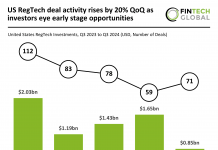The FBI’s Internet Crime Complaint Center (IC3) revealed it received 649 complaints of ransomware attacks that had targeted critical infrastructure organisations last year.
According to the IC3’s 2021 Internet Crime Report, ransomware attacks hit 14 out of 16 critical infrastructure sectors last year, with healthcare and public health bearing the biggest brunt from these attacks.
The IC3 took in a total of 148 complaints of ransomware attacks on the healthcare sector, with financial services second on 89 and information technology on 74. Critical manufacturing saw up to 65 complaints with government facilities seeing a reported 60 attacks.
IC3 found the top three ransomware groups that targeted critical infrastructure were Conti – which mostly focused on critical manufacturing, commercial facilities and food and agriculture, LockBit – who hit government, healthcare and financial organisations – and REvil/Sodinokibi targeted financial services, IT, public health and healthcare.
Over the entirety of 2021, the IC3 received 3,729 complaints of ransomware attacks, with losses coming to $49.2m. All reported cybercrime for 2021 came to a total of $6.9bn.
Up to 850,000 complaints related to internet cybercrime were recorded last year, up around 50,000 from 2020. Phishing held top spot as the top cybercrime type last year, accounting for 324,000 of the received complaints. This was followed by non-payment/non-deliver, personal data breach, identity theft and extortion.
A total of 19,954 business email compromise/email account compromise complaints were recorded in 2021, with adjusted losses coming close to $2.4bn. Meanwhile, the US and the UK were home to the most internet crime complaints, at more than 466,000 and more than 300,000 complaints respectively.
Copyright © 2022 FinTech Global











